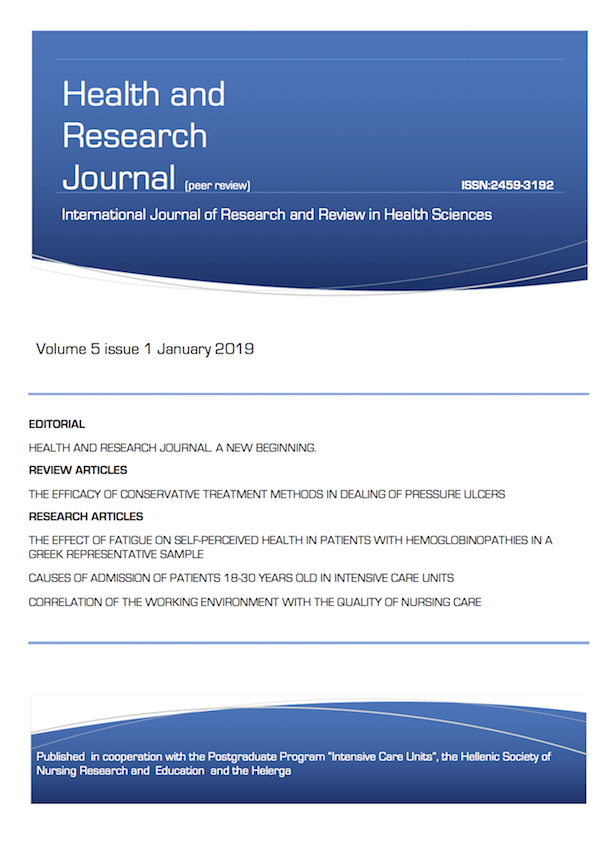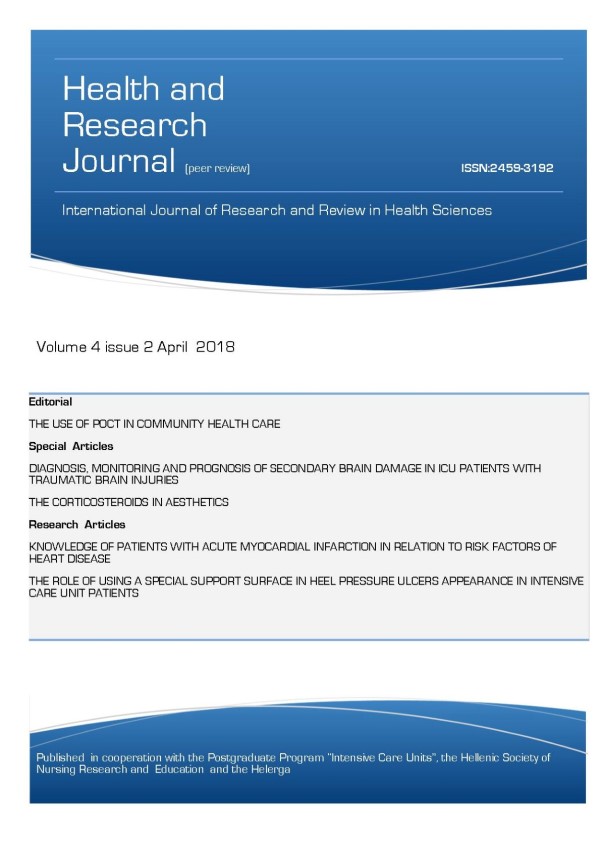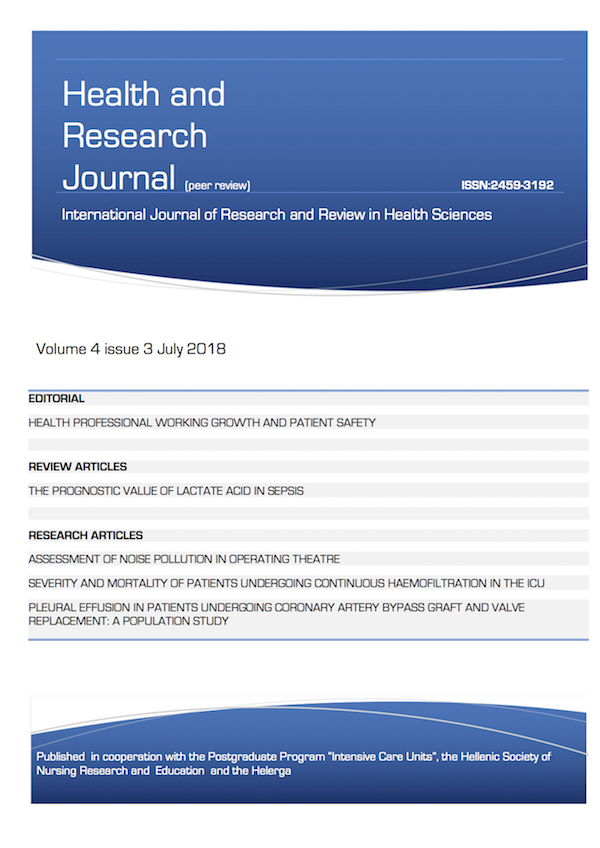The efficacy of conservative treatment methods in pressure ulcers

Abstract
Background: Pressure ulcer is defined as the localised destruction of skin and the underlying tissues, caused by a combination of prolonged pressure, friction and shear forces, resulting in tissue ischemia and necrosis. In addition to prevention, treatment of ulcers has an important role. This study analyses, the effectiveness of conservative treatment methods.
Aim: The aim of the present study was to investigate the efficacy of conservative treatment methods in patients with ulcers and to evaluate these methods.
Material and Methods: The present study is a systematic review. The search was conducted in Greek and international bibliography on electronic databases: Pubmed, Cinahl, Sciverse Scopus Proquest, as well as in translations of major international scientific organisations such as EPUAP and NPUAP. The date of writing the articles ranges from 2010 to 2017. Articles were selected based on the title, summary, and content.
Results: The results of the present study revealed the efficacy of various conservative methods of dealing with pressure ulcers based on the publication of studies in medical data bases. The treatment is multifactorial and requires special knowledge from healthcare professionals, attention and assessment of a sprawl. The ineffective treatment of ulcers can lead to death, especially if not treated on time and in the right way.
Conclusions: The findings show that the treatment depends on the severity of the pressure ulcer in relation to the general condition of the patient (condition, age, diet, weight, immobility, personal hygiene). Nonetheless, it can be addressed by proper prognosis, timely assessment, and appropriate countermeasures. These require sufficient knowledge of doctors and nurses over the existing conservative therapies and what / when they should be applied.
Article Details
- How to Cite
-
Impis, O., Vasilopoulos, G., Kalemikerakis, I., & Argyriou, G. (2019). The efficacy of conservative treatment methods in pressure ulcers. Health & Research Journal, 5(1), 2–9. https://doi.org/10.12681/healthresj.19509
- Section
- Reviews
Copyright notice:
The journal "Health and Research Journal" reserves the rights for copyright of the content of the website and also the copyright of the articles published.
By virtue of their appearance in this journal, the articles are free to be used for non-commercial purposes. However, the articles cannot and must not be used in anyway, published elsewhere or modified without any reference to the author and the first publication of the article.







